Abstract
The activity of carbenicillin against 200 strains of Pseudomonas aeruginosa was measured by a quantitative agar dilution method. Minimal inhibitory concentrations (M.I.C.'s) for five graded inocula were measured in terms of complete inhibition (CI) and reduced growth (RG). The M.I.C. decreased progressively as inocula were reduced, median values for the 200 strains ranging from 100 to 37.5 μg. per ml. by the CI criterion, and from 75 to 25 μg. per ml. by the RG definition. Ratios of M.I.C. obtained for large and small inocula were usually small. Identical M.I.C.'s by both CI and RG criteria were most often obtained when the inoculum for the RG criterion was 1 or 2 logs higher than that for complete inhibition.
Population analysis of 15 strains of Ps. aeruginosa showed that one specific drug concentration usually caused a sharp drop in proportion of viable cells, ranging from 3 to 5 logs. None of the populations were completely non-viable even at 150 μg. per ml. There was evidence that the viability of different-sized populations was reduced disproportionately by carbenicillin.
Carbenicillin 300 μg. per ml. exerted appreciable bactericidal effect against nine of 15 strains of Ps. aeruginosa after a 24-hour contact period; after only six hours the bactericidal effect was very small.
Quantitative sensitivity measurements for carbenicillin should include M.I.C. values for both CI and RG criteria, using a range of inocula for testing. Such M.I.C. values may well be useful in monitoring carbenicillin therapy of tissue infections.
Full text
PDF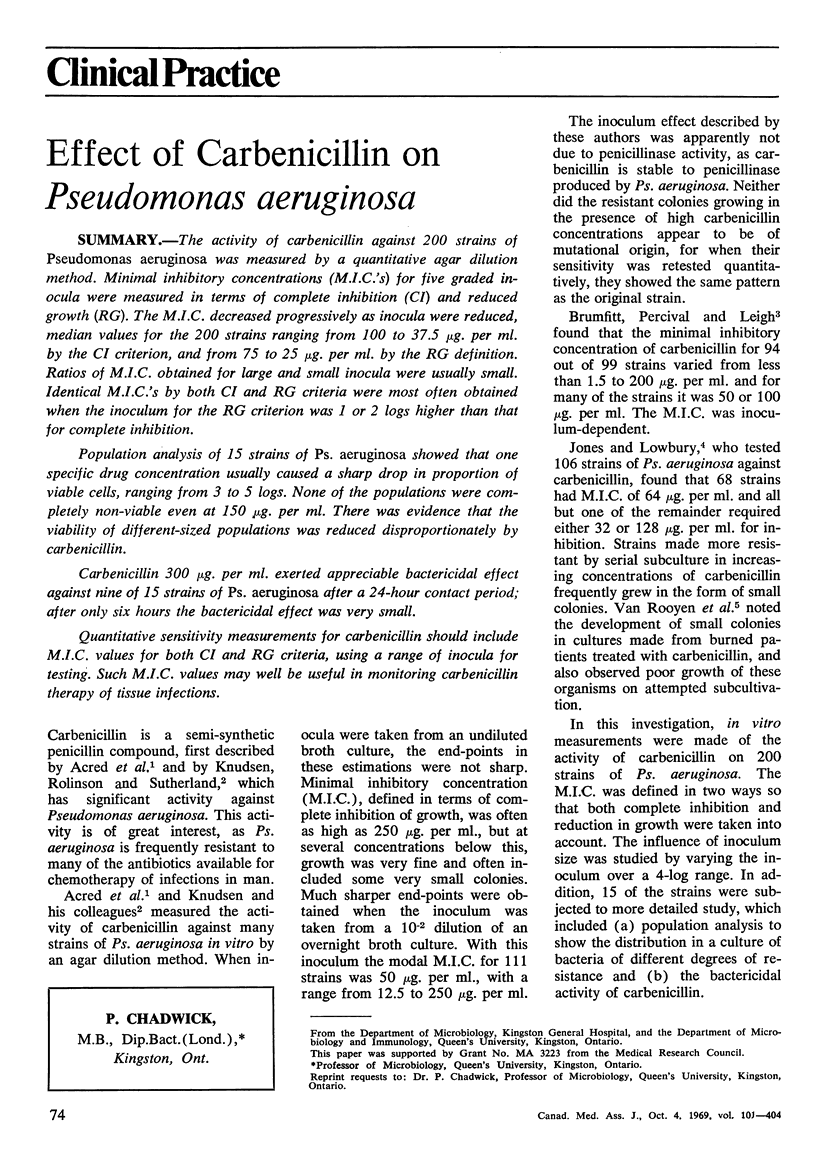
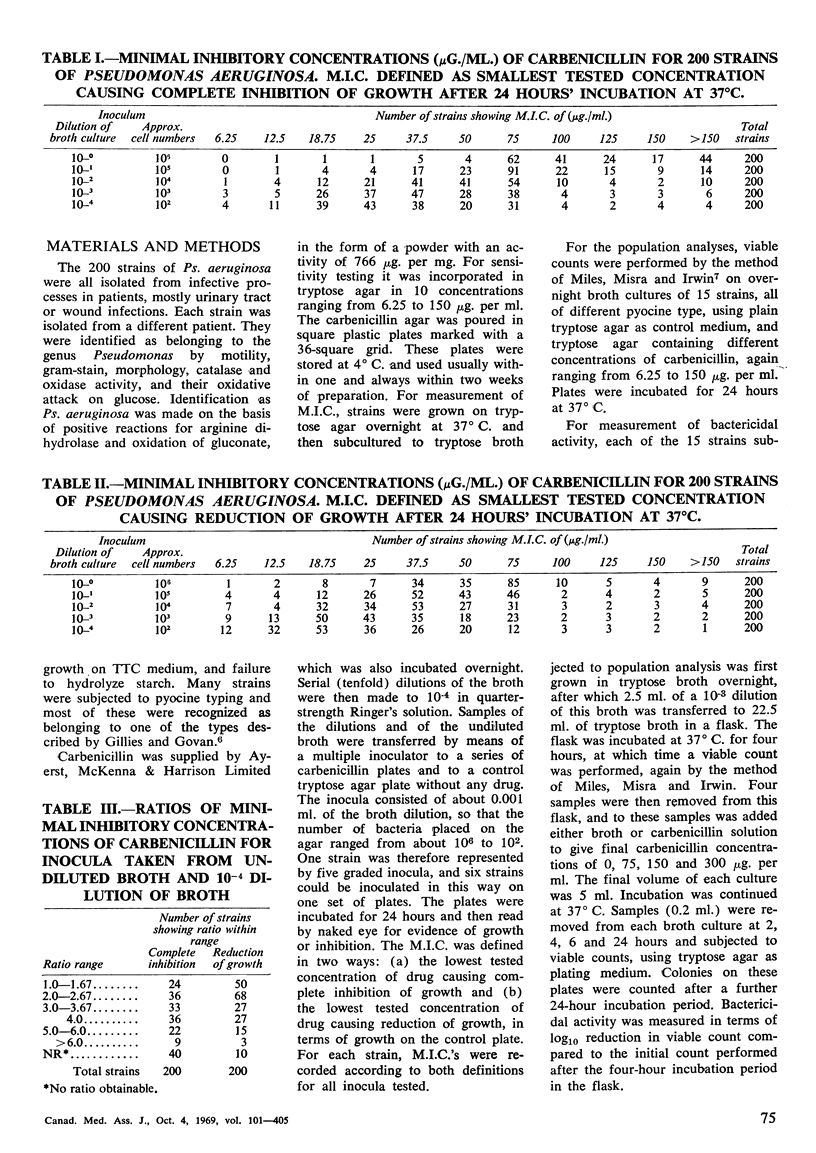
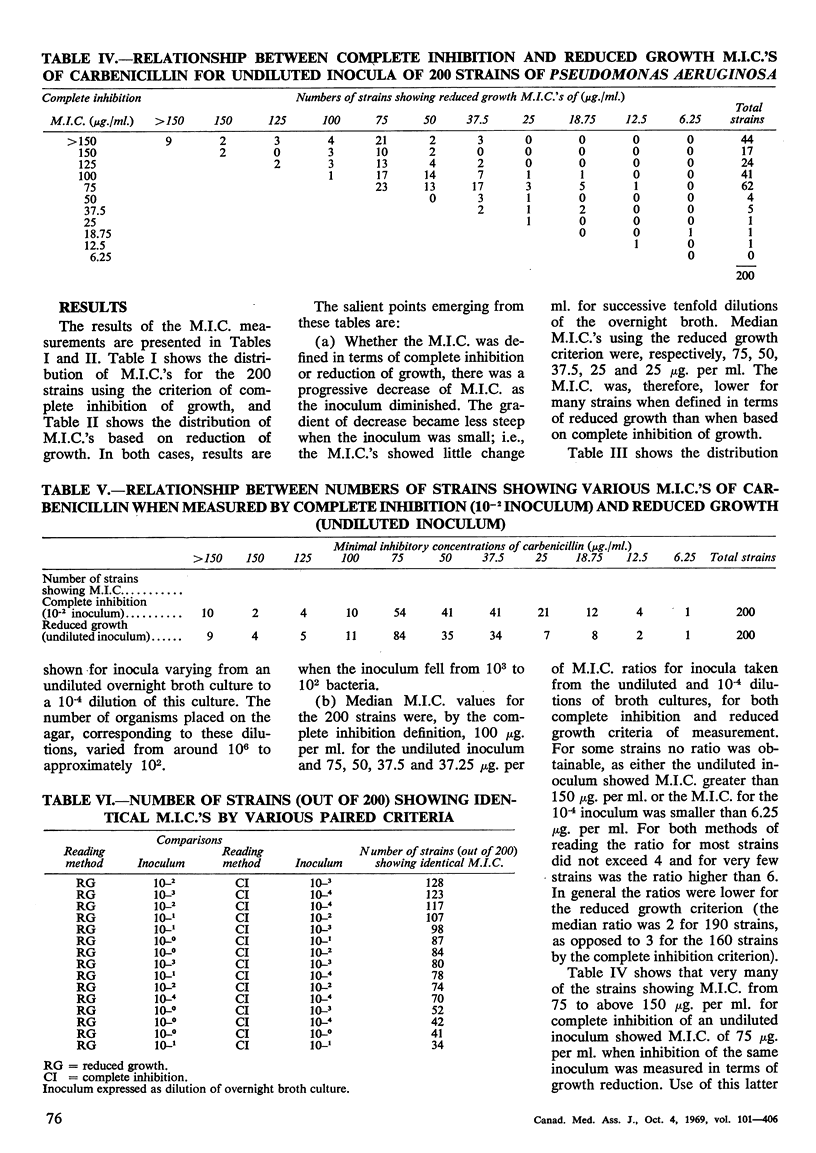
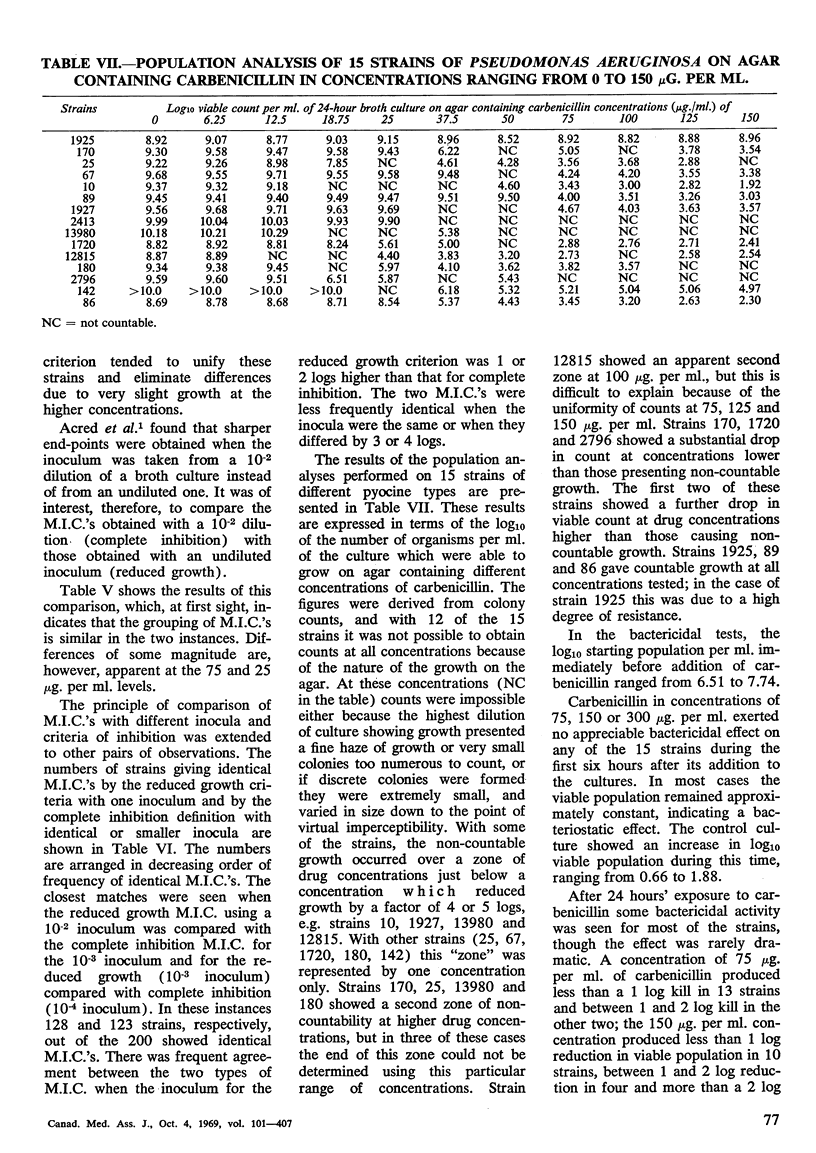
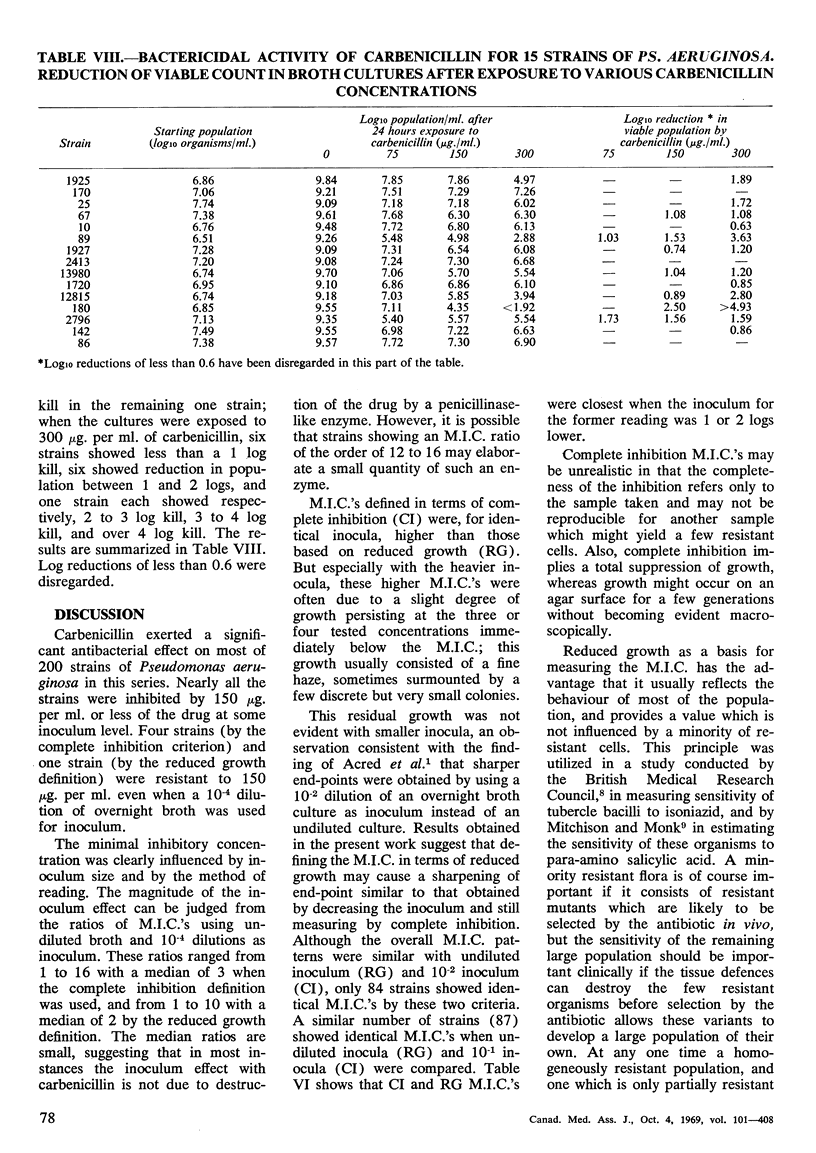
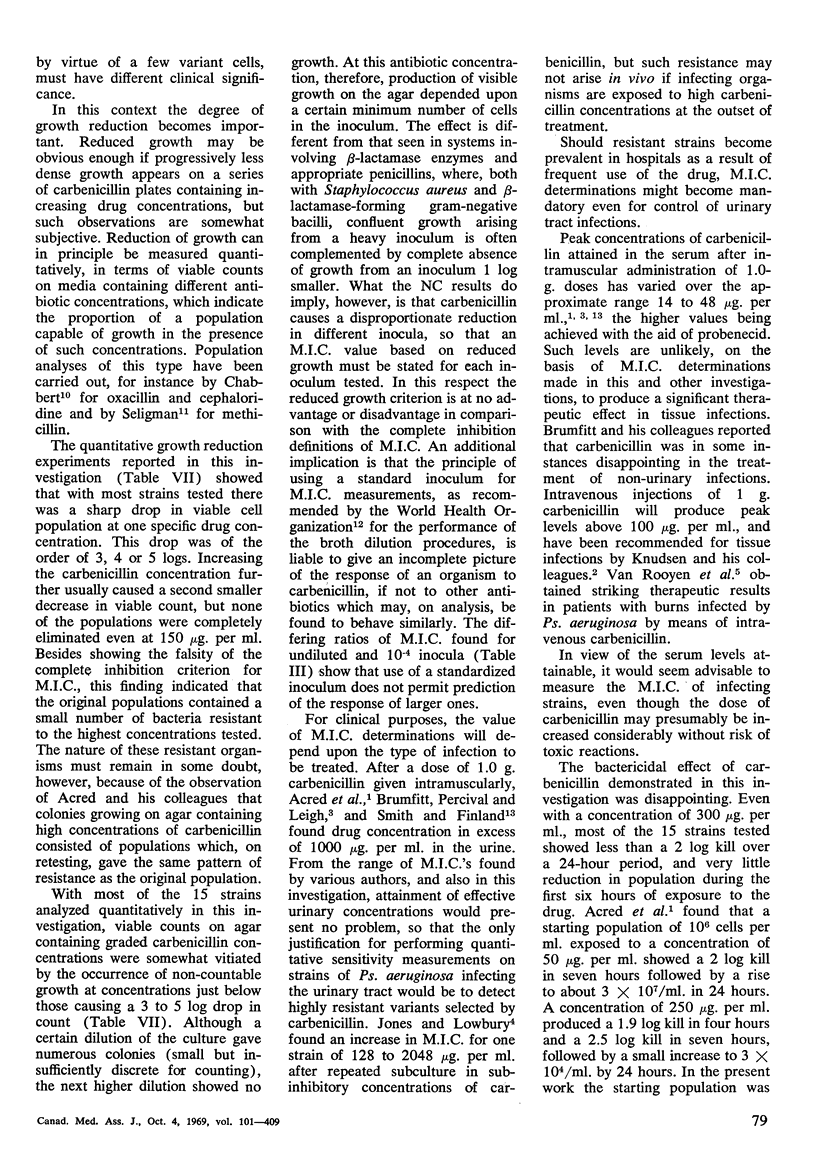

Selected References
These references are in PubMed. This may not be the complete list of references from this article.
- Acred P., Brown D. M., Knudsen E. T., Rolinson G. N., Sutherland R. New semi-synthetic penicillin active against Pseudomonas pyocyanea. Nature. 1967 Jul 1;215(5096):25–30. doi: 10.1038/215025a0. [DOI] [PubMed] [Google Scholar]
- Brumfitt W., Percival A., Leigh D. A. Clinical and laboratory studies with carbenicillin. A new penicillin active against Pseudomonas pyocyanea. Lancet. 1967 Jun 17;1(7503):1289–1293. doi: 10.1016/s0140-6736(67)91590-5. [DOI] [PubMed] [Google Scholar]
- Gillies R. R., Govan J. R. Typing of Pseudomonas pyocyanea by pyocine production. J Pathol Bacteriol. 1966 Apr;91(2):339–345. doi: 10.1002/path.1700910207. [DOI] [PubMed] [Google Scholar]
- Seligman S. J. Methicillin-resistant staphylococci: genetics of the minority population. J Gen Microbiol. 1966 Feb;42(2):315–322. doi: 10.1099/00221287-42-2-315. [DOI] [PubMed] [Google Scholar]
- Smith C. B., Finland M. Carbenicillin: activity in vitro and absorption and excretion in normal young men. Appl Microbiol. 1968 Nov;16(11):1753–1760. doi: 10.1128/am.16.11.1753-1760.1968. [DOI] [PMC free article] [PubMed] [Google Scholar]
- Van Rooyen C. E., Ross J. F., Bethune G. W., MacDonald A. C. Bacteriological observations on carbenicillin in the control of Pseudomonas aeruginosa infection in burns. Can Med Assoc J. 1967 Nov 11;97(20):1227–1229. [PMC free article] [PubMed] [Google Scholar]


